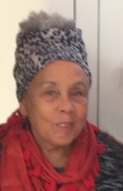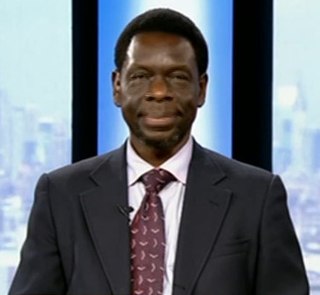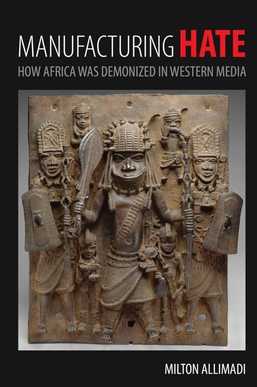
Blackface is a form of theatrical makeup used predominantly by non-Black people to portray a caricature of a Black person.
Covert racism is a form of racial discrimination that is disguised and subtle, rather than public or obvious. Concealed in the fabric of society, covert racism discriminates against individuals through often evasive or seemingly passive methods. Covert, racially-biased decisions are often hidden or rationalized with an explanation that society is more willing to accept. These racial biases cause a variety of problems that work to empower the suppressors while diminishing the rights and powers of the oppressed. Covert racism often works subliminally, and often much of the discrimination is being done subconsciously.

Betye Irene Saar is an African-American artist known for her work in the medium of assemblage. Saar is a visual storyteller and an accomplished printmaker. Saar was a part of the Black Arts Movement in the 1970s, which engaged myths and stereotypes about race and femininity. Her work is considered highly political, as she challenged negative ideas about African Americans throughout her career; Saar is best known for her art work that critiques American racism toward Blacks.
Black is beautiful is a cultural movement that was started in the United States in the 1960s by African Americans. It later spread beyond the United States, most prominently in the writings of the Black Consciousness Movement of Steve Biko in South Africa. Black is beautiful got its roots from the Négritude movement of the 1930s. Negritude argued for the importance of a Pan-African racial identity among people of African descent worldwide.
"An Image of Africa: Racism in Conrad's Heart of Darkness" is the published and amended version of the second Chancellor's Lecture given by Chinua Achebe at the University of Massachusetts Amherst, in February 1975. The essay was included in his 1988 collection, Hopes and Impediments. The text is considered to be part of the postcolonial critical movement, which advocates to Europeans the consideration of the viewpoints of non-European nations, as well as peoples coping with the effects of colonialism.

"New Negro" is a term popularized during the Harlem Renaissance implying a more outspoken advocacy of dignity and a refusal to submit quietly to the practices and laws of Jim Crow racial segregation. The term "New Negro" was made popular by Alain LeRoy Locke in his anthology The New Negro.

Stereotypes of African Americans are misleading beliefs about the culture of people of African descent who reside in the United States, largely connected to the racism and discrimination which African Americans are subjected to. These beliefs date back to the slavery of black people during the colonial era and they have evolved within American society.

The Harlem Renaissance was an intellectual and cultural revival of African American music, dance, art, fashion, literature, theater, politics and scholarship centered in Harlem, Manhattan, New York City, spanning the 1920s and 1930s. At the time, it was known as the "New Negro Movement", named after The New Negro, a 1925 anthology edited by Alain Locke. The movement also included the new African American cultural expressions across the urban areas in the Northeast and Midwest United States affected by a renewed militancy in the general struggle for civil rights, combined with the Great Migration of African American workers fleeing the racist conditions of the Jim Crow Deep South, as Harlem was the final destination of the largest number of those who migrated north.

Archibald John Motley, Jr., was an American visual artist. He studied painting at the School of the Art Institute of Chicago during the 1910s, graduating in 1918. Motley is most famous for his colorful chronicling of the African-American experience in Chicago during the 1920s and 1930s, and is considered one of the major contributors to the Harlem Renaissance, or the New Negro Movement, a time in which African-American art reached new heights not just in New York but across America—its local expression is referred to as the Chicago Black Renaissance.
Black people have been portrayed in comics since the medium's beginning, with their portrayals often the subject of controversy. Mainstream comic publishing companies have had a historical trend of being predominantly white and male, reflecting the lack of representation and inaccurate depictions of Black people in comics. The integration of black characters in mainstream and superhero comics has endured various obstacles and challenges. Critics have noted that black men and women have historically often been portrayed as jungle or ghetto stereotypes, and as sidekicks as opposed to primary characters. In recent years, with the integration of more Black people in mainstream comic writing rooms as well as the creation of comics on digital platforms has changed the representation and portrayals of Black people in comics and has started to reflect the complexities of Black people across the diaspora.

Jynx, known in Japan as Rougela, is a Pokémon species in Nintendo and Game Freak's Pokémon franchise. Created by Ken Sugimori, Jynx first appeared in the video games Pokémon Red and Blue and subsequent sequels, later appearing in various merchandise, spinoff titles, or animated and printed adaptations of the franchise. The character is voiced in the anime and other media in Japanese by Mayumi Tanaka and by Rachael Lillis in English.
Racist rhetoric is distributed through computer-mediated means and includes some or all of the following characteristics: ideas of racial uniqueness, racist attitudes towards specific social categories, racist stereotypes, hate-speech, nationalism and common destiny, racial supremacy, superiority and separation, conceptions of racial otherness, and anti-establishment world-view. Racism online can have the same effects as offensive remarks made face-to-face.

The themes encompassed in African-American writer Maya Angelou's seven autobiographies include racism, identity, family, and travel. Angelou (1928–2014) is best known for her first autobiography, I Know Why the Caged Bird Sings (1969). The rest of the books in her series are Gather Together in My Name (1974), Singin' and Swingin' and Gettin' Merry Like Christmas (1976), The Heart of a Woman (1981), All God's Children Need Traveling Shoes (1986), A Song Flung Up to Heaven (2002), and Mom & Me & Mom (2013).
Racism is a concern for many in the Western lesbian, gay, bisexual and transgender (LGBT) communities, with members of racial, ethnic, and national minorities reporting having faced discrimination from other LGBT people.
Racism in martial arts has been a common allegation.
Stereotypes and generalizations about Africa, its inhabitants, and their culture have evolved in the Western world since the years of colonial settlement. The idea of Africa's negative stereotypes come from historical and media interactions. Many of the stereotypes of Africa originate from colonialism, racism and media representation.
J. R. R. Tolkien's Middle-earth fantasy writings have often been accused of embodying outmoded attitudes to race. However, scholars have noted that he was influenced by Victorian attitudes to race and to a literary tradition of monsters, and that he was anti-racist both in peacetime and during the two World Wars.

Brit(ish): On Race, Identity and Belonging is a 2018 book by the journalist Afua Hirsch. The book is part-memoir and discusses black history, culture and politics in the context of Britain, Senegal and Ghana. It received mixed critical reception.

Milton Allimadi is a Ugandan-American author, journalist, professor, and a co-founder of Black Star News.

Manufacturing Hate - How Africa Was Demonized in Western Media is a 2021 non-fiction book by Milton Allimadi.











